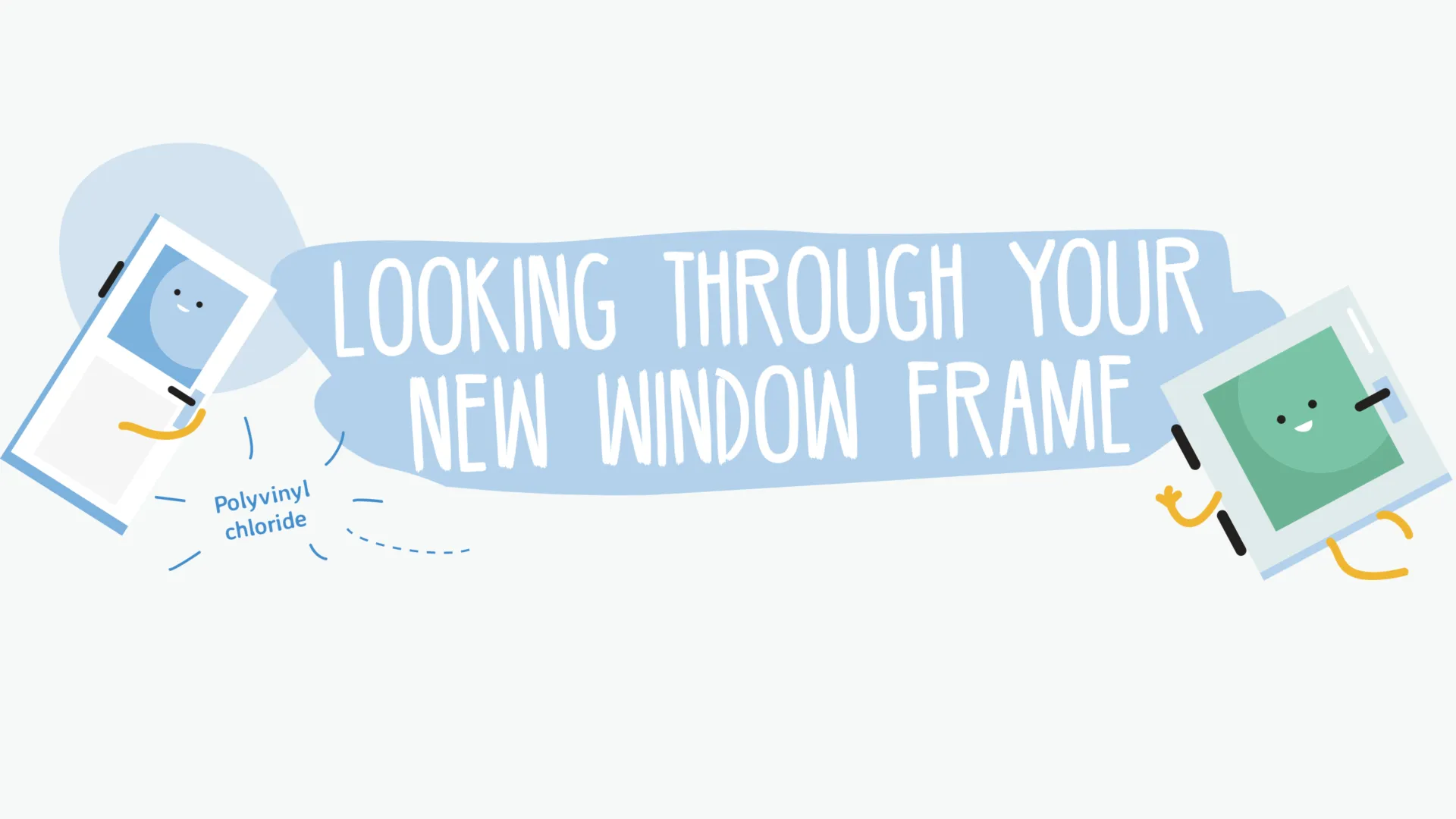The PVC Recycling Process Explained
Looking Through Your New Window Frame
PVC (polyvinyl chloride) is everywhere in the built environment—from window and door profiles to pipes, cable ducts, and flooring. Because rigid PVC can be recovered and reprocessed multiple times, PVC recycling turns bulky end-of-life components into valuable rPVC feedstock and keeps construction materials in a true circular loop.
HERE’S A STEP-BY-STEP RUNDOWN OF THE PVC RECYCLING PROCESS
1. COLLECTION
The journey starts with collecting bulky post-consumer and post-industrial PVC—think old window frames, off-cuts, and pipes from renovation and demolition. Long pieces are cut into handy 1.5-meter lengths to simplify handling and downstream processing.
2. SORTING
Non-PVC parts—like metal reinforcements, hinges, and seals—are removed. Over-belt magnets and eddy-current systems pull out metals, and the remaining frames are shredded into uniform pieces for efficient cleaning.
Design-for-Recycling guidelines help here: easy-to-remove hardware, peelable seals, and recyclable sleeve/foil choices speed up PVC recycling and improve yield.
3. WASHING
Shredded pieces are thoroughly washed to lift off dust, rubber, wood, adhesives, and other contaminants. Depending on the line, multiple separation and wash cycles are used to reach the required purity for high-quality rPVC.
Process water is typically filtered and recirculated in a closed loop—cutting water use and minimizing environmental impact.
4. GRINDING
Clean PVC is further size-reduced into fine, consistent fragments. A narrow particle-size distribution improves heat transfer and delivers uniform melting and color during extrusion.
Consistency at this stage is critical for stable throughput and high-quality surface finish in the final product.
5. DUST SEPARATION
Powerful aspiration removes fines and light residues—think of a giant industrial vacuum. Taking out dust at this point protects downstream filters and improves the cleanliness of the rPVC flakes.
6. STORAGE
Clean, dry flakes are buffered in silos. Blending across batches helps keep properties consistent so extrusion runs smoothly and finished profiles stay on-spec.
7. EXTRUSION
Flakes are heated, filtered, and homogenized before being formed into uniform pellets—recycled PVC (rPVC). Stabilizers and process controls ensure the melt stays within the right window for color, viscosity, and mechanical performance.
rPVC pellets are a standardized raw material—easy to transport, store, dose, and feed into manufacturing lines for new products.
8. QUALITY CONTROL
Laboratory checks verify strength, color, and purity. Typical tests include density and ash content, color/whiteness (b*), tensile/impact performance, particle-size checks, and PVC-specific metrics such as K-value/viscosity number—ensuring every batch meets strict specifications.
Consistent QC keeps rPVC suitable for long-life applications like window profiles and pipe systems.
9. NEW RECYCLED PRODUCT
Once approved, rPVC pellets are ready for manufacturing new, long-lasting products—such as window and door profiles, pipework, and other building components—closing the loop on PVC recycling.
Why is PVC Recycling Crucial?
- Reduces bulky waste: Diverts construction & demolition materials from landfill and extends product lifecycles.
- Conserves resources: Cuts demand for virgin feedstocks by turning end-of-life PVC into rPVC.
- Saves energy: Producing rPVC generally requires less energy than making virgin PVC from scratch.
- Maintains performance: Rigid PVC can be recycled multiple times while retaining durable mechanical properties in the right applications.
Common Products from Recycled PVC
- New window & door profiles: A key outlet for high-quality, window-grade rPVC.
- Pipes and fittings: Drainage, sewer, and cable protection systems.
- Flooring and mats: Resilient tiles and durable commercial mats.
- Traffic management: Cones, speed bumps, and signage components.
Frequently Asked Questions (FAQ)
Q: What makes PVC ideal for window frames?
A: PVC resists moisture, weathering, and chemicals, offers strong thermal insulation, and needs minimal maintenance—perfect for long-life window and door systems.
Q: Can all PVC products be recycled together?
A: Not always. Rigid PVC (profiles, pipes) and flexible PVC (hoses, films) use different formulations and should be processed in compatible streams for the best results.
Q: Is recycled PVC as strong as new PVC?
A: Yes—when correctly processed and formulated. In window profiles, for example, recycled core layers can be co-extruded with thin virgin skins to deliver a pristine outer appearance and stable long-term performance.
This multi-stage process depends on robust, precise machinery. At Rumtoo Machine, we supply industrial-grade PVC recycling equipment for each step—helping convert old PVC into high-value rPVC efficiently and consistently.



